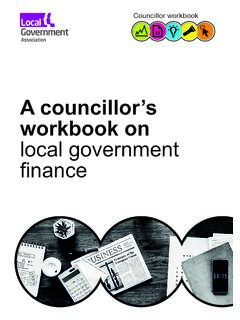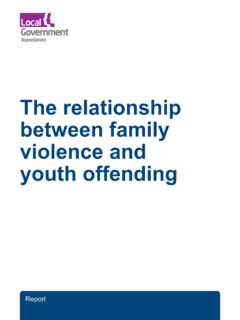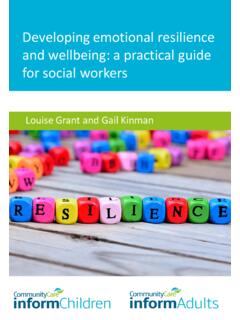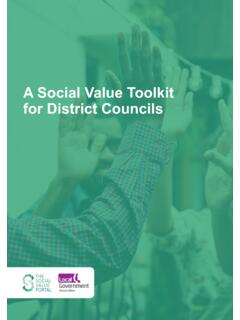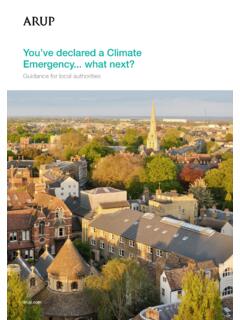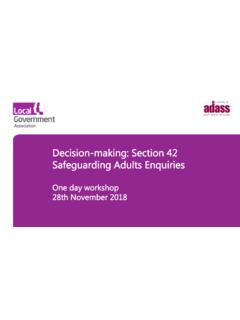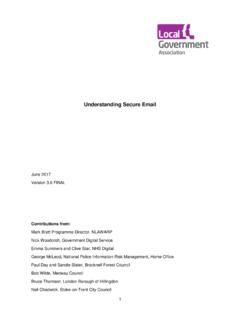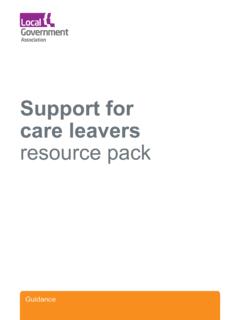Transcription of Tackling serious and organised crime
1 1 Tackling serious and organised crime : a local responseTackling serious and organised crimea local responseReport2 Tackling serious and organised crime : a local responseForewordMore and more, councils are working with law enforcement partners to disrupt serious and organised crime . serious and organised crime can have a profound impact on an individual, family, business or community. This is particularly prevalent where vulnerability plays a part within individuals, families and communities, as those who are most vulnerable are frequently targeted by organised crime groups and more likely to be exploited. Traditionally, the view has been that serious and organised crime is not the responsibility of local councils given its complexity and the general view that it doesn t take place in sight of the general public.
2 However, given that local councils often take responsibility for vulnerable individuals within our communities, it is vital that organised crime is addressed as part of council agendasRecently, there has been an increasing recognition that serious and organised crime can occur across all communities, in public spaces and in private dwellings. Councils have access to critical community intelligence and a number of enforcement powers that can be used to disrupt this criminality and protect local communities. Developments in technology are creating more and more opportunities for councils and their partners to prevent, detect and disrupt the activity of organised crime groups. However, this is an area also exploited by organised crime groups as it enables them to circumvent the traditional methods of preventing and Tackling organised crime .
3 Therefore, it is paramount that councils maximise all opportunities to utilise modern technology in order to keep one step already work in partnership with their law enforcement partners on a number of community safety issues, but increasingly they are working together to disrupt serious and organised crime . Examples include sharing information about the use of properties to enable crime , traders of illicit goods that may have links to other criminal activity or closing venues that permit the sale of illicit drugs. Many criminals involved in serious and organised crime also commit low level criminal offences that can be enforced by local councils such as fly- tipping , illegal parking or benefit fraud. Tackling low level criminality such as this can significantly impact on organised criminality and thus minimise its harm to local communities.
4 This guidance outlines the important role of councils working with law enforcement partners to tackle serious and organised crime . Included in this guidance is more information about what serious and organised crime looks like, how it impacts local communities, suggested roles and responsibilities for councils, case studies of local approaches and recommended questions to ask and check local understanding of the prevalence and impact of serious and organised crime . We hope you find this guidance helpful in your ongoing role to protect local communities. Councillor Simon Blackburn Chair LGA Safer and Stronger Communities Board3 Tackling serious and organised crime : a local responseContentsIntroduction 4 serious and organised crime 6 The national policy context 12 The role of councils and their partners in Tackling serious and organised crime 14 serious and organised crime threat summary 22 Councillor questions 28 Appendix 1: additional resources 324 Tackling serious and organised crime : a local responseIntroductionAlthough serious and organised crime (SOC) is often thought of in a regional, national or international context its impact is most felt by local communities.
5 It harms individuals, families and local businesses alike with rippling implications for even the smallest and most rural communities. However it is not a crime itself. SOC is controlled and led by organised crime groups (OCGs) that use intimidation tactics and corruption for unlawful gain. OCGs are deceitful and unscrupulous in their pursuit of money, power or personal gratification through the harm of others. These are hidden crimes that take place around us every day. Too often, the theft of a mobile phone or possession of drugs for personal use enables a more insidious, organised and pervasive criminality such as human trafficking or fraud. SOC has a significant social and economic cost estimated at 24 billion each year to the overall economy. These criminals often prey on vulnerable communities and individuals to profit financially or otherwise.
6 They supply and distribute illegal drugs, firearms and counterfeit goods; commit fraud, tax evasion and facilitate human trafficking and child sexual exploitation (CSE). The profile and prevalence of SOC differs greatly from area to area, community to community. Some areas may be more vulnerable to the supply and distribution of drugs whilst other areas may have hidden victims of modern slavery or trafficking. Councils need to understand their unique local vulnerabilities to serious and organised crime and address them through multi-agency action guidance is for all those in local government who have a role in making our communities safer and protecting the most vulnerable members of our communities. It is aimed at leaders and members of community safety partnerships, health and wellbeing boards and local safeguarding boards.
7 It is also aimed at those who have a role in leading, planning, commissioning and delivering services from community safety, public protection and regulation, licensing, housing, transport, advice and guidance, through to leisure services, cultural activities and supporting community development. 5 Tackling serious and organised crime : a local responseThere is a clear role for councils alongside law enforcement agencies to tackle organised crime . Councils should work in partnership with the Police and other agencies to: identify and safeguard vulnerable adults exploited by OCGs tackle child sexual exploitation, especially where there is clear organised criminality protect communities from cyber enabled crime such as fraud use local regulation and licensing and powers to disrupt OCGs use taxis/PHVs or licensed premises to share essential community intelligence tackle those selling counterfeit or illicit goods which may be linked to wider, more organised criminality Councils should work with their local law enforcement to understand the current prevalence and nature of serious and organised crime in their area.
8 They should develop local serious and organised crime profiles and multi-agency action plans to tackle local issues. This document will also give advice on the role of local councils and councillors. 6 Tackling serious and organised crime : a local responseSerious and organised crimeWhat is serious and organised crime ? serious and organised crime : takes places within local communities, across local borders, nationally and internationally is dynamic and opportunistic is perpetrated by groups of networks of individuals that collaborate to establish criminal networks and build resilient and profitable organisations involves violence, corruption and intimidation to protect and sustain criminal activity develops access to a diverse set of capabilities across a wide network of individuals, including professionals such as lawyers and accountants, often targeted for their expert knowledge.
9 The UK Government1 and National crime Agency (NCA)2 define serious and organised crime (SOC) as serious crime planned, coordinated and conducted by people working together on a continuing basis. Their motivation is often, but not always, financial gain. organised criminals working together for a particular criminal activity or activities are called an organised crime group (OCG) .1 Home Office (2013) serious and organised crime Strategy 2 National crime Agency: undertake the following criminal activities: the organised supply and distribution of drugs sophisticated theft and robbery organised child sexual exploitation, including the sharing of indecent images of children online human trafficking and modern slavery fraud and other forms of financial crime the supply of firearms or other weapons and counterfeit goods cyber crime and cyber-enabled crime3, including online grooming, harassment and stalking.
10 3 Ibid 7 Tackling serious and organised crime : a local response organised crime is commonly viewed within partner agencies as being in the stratosphere of offending; the preserve of the Police and tackled by highly specialist police teams. The community safety partnerships in Bedfordshire realise that the impact of serous and organised crime is felt both directly and indirectly locally. Now, previously considered low level nuisance activity is tested for links to other more serious or organised criminality. For example, cycling on pavements has been attributed to drug dealing networks and street prostitution influenced by organised immigration crime . Information sharing and the production of serious and organised crime local profiles have helped improve this understanding.
